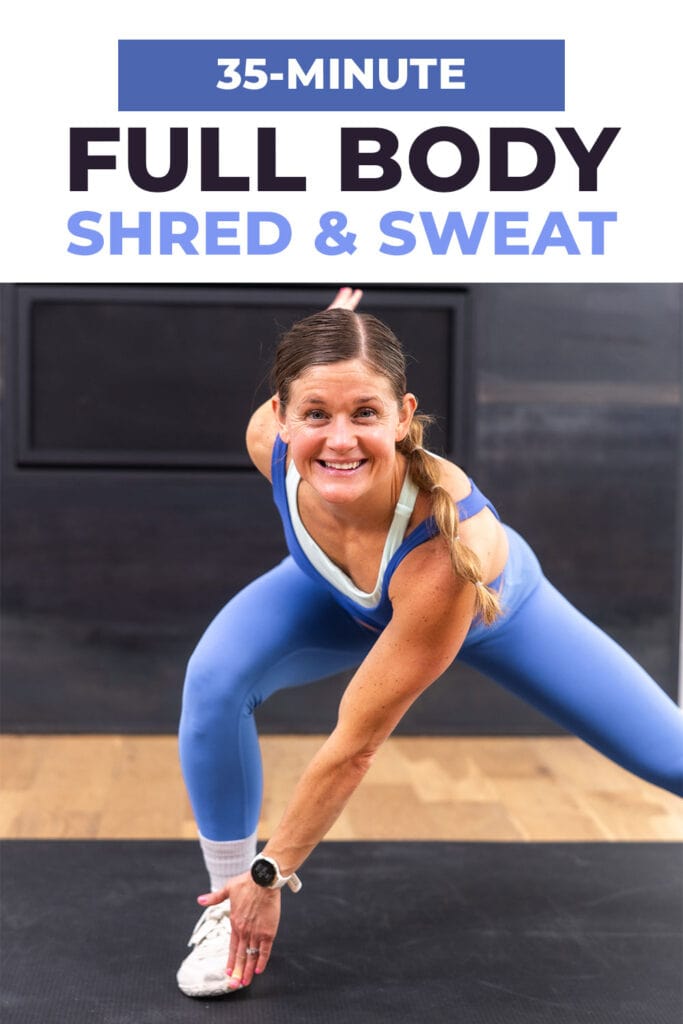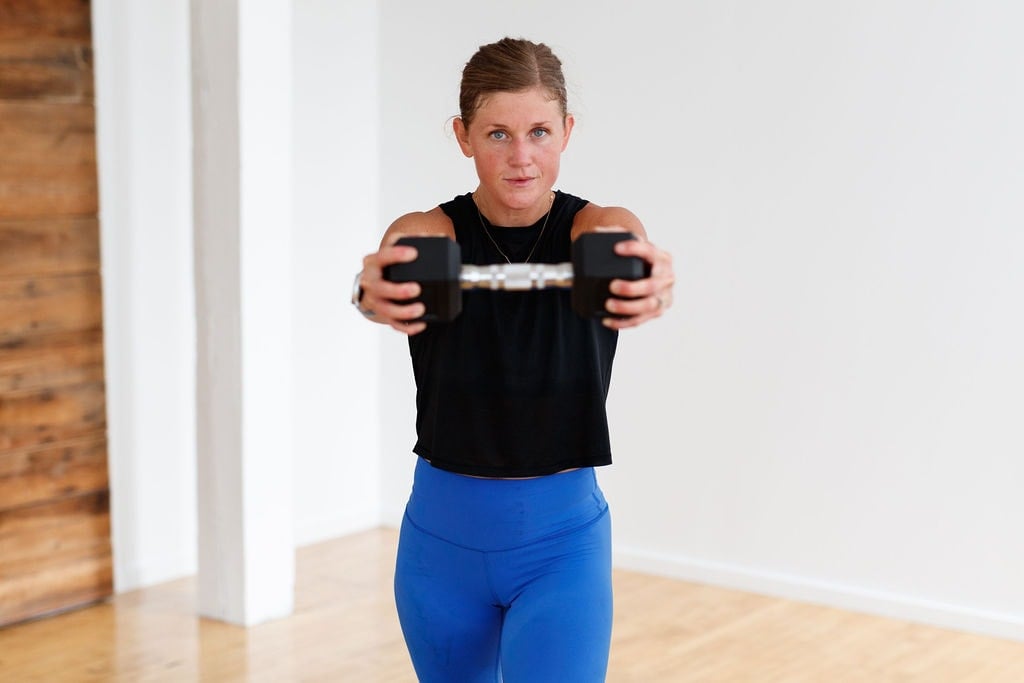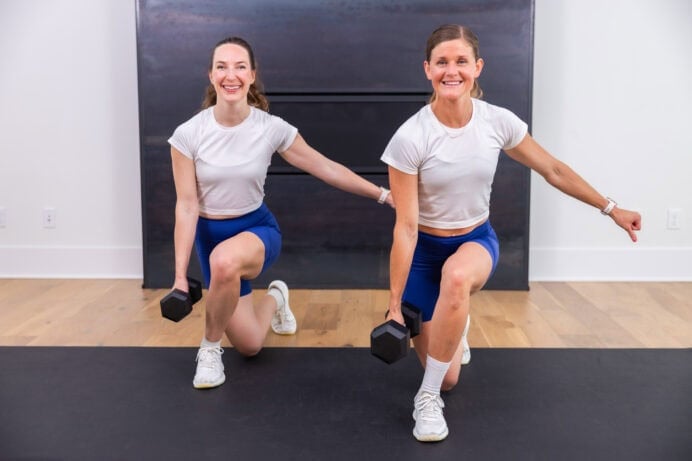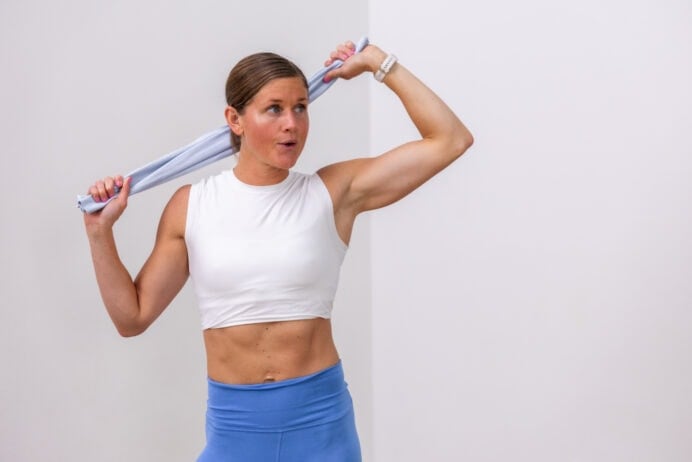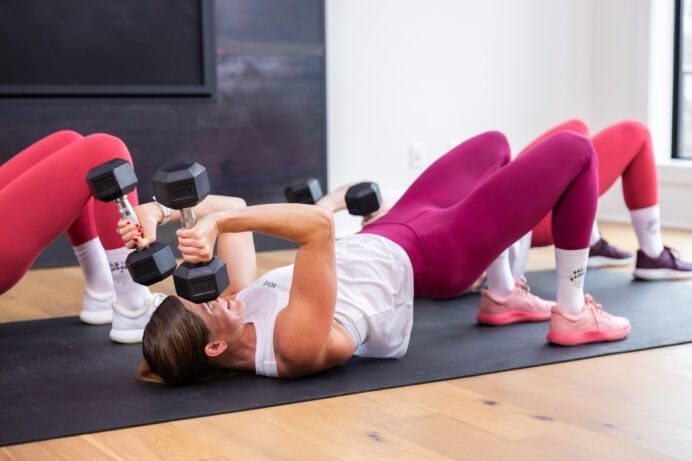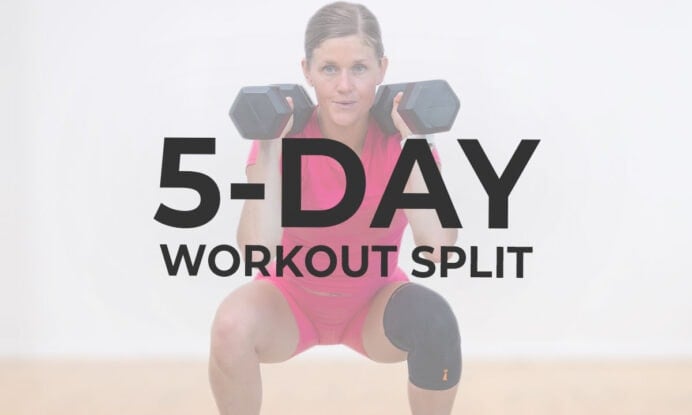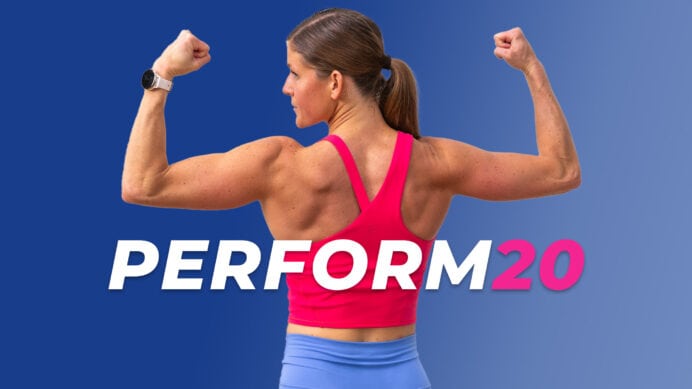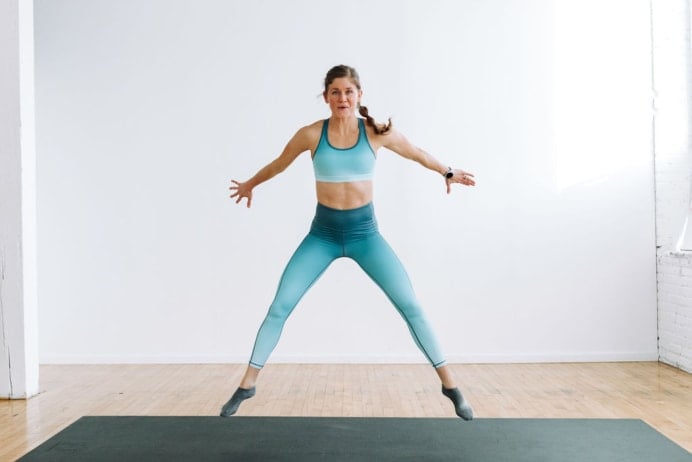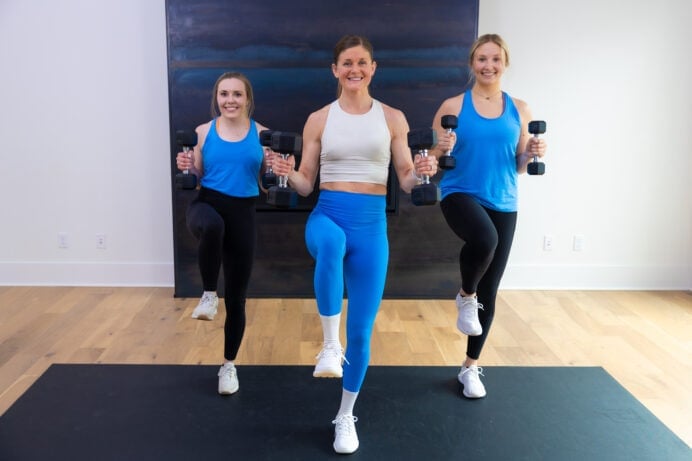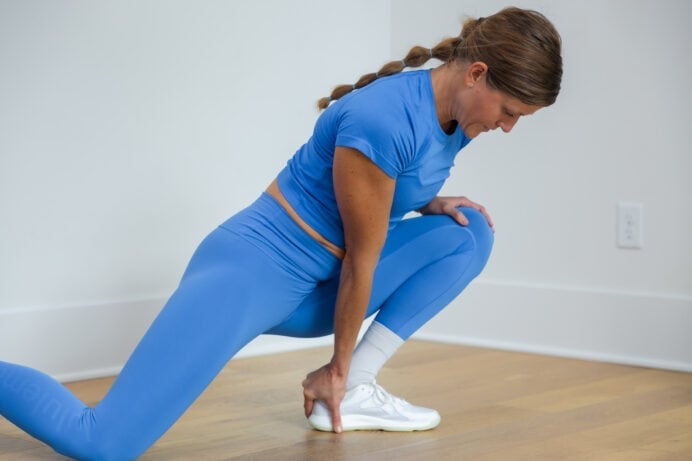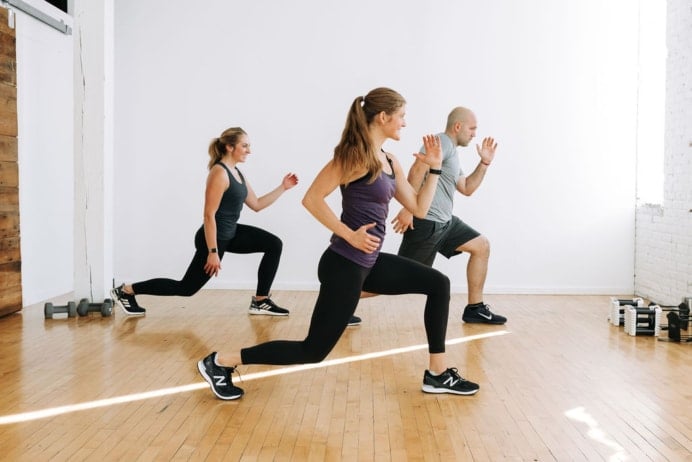
35-Minute Full Body HIIT Workout
Push your limits with this no-equipment, no-repeat full-body HIIT workout. I love how efficient this workout is: stacking together the best HIIT exercises in a super sweaty training session at home or at the gym.
If I were short on time but wanted to maximize results, I would prioritize HIIT training.
HIIT, or high-intensity interval training, is a form of cardio known for its efficiency. It has rapidly gained popularity in the last decade because of how effective it is at burning fat, increasing your VO2 max (a measurement of cardiovascular fitness) and breaking through fitness plateaus.
A typical HIIT workout is relatively quick (typically 20-30 minutes) and alternates short bursts of high-intensity exercise (such as burpees, lunge jumps, push-ups or jumping jacks) with brief recovery periods. This is different from steady-state cardio, which involves working at a moderate intensity for a longer amount of time.
These brief rest periods ensure that your heart rate stays around 80% of your maximum heart rate for the majority of the workout.
One of the key differences between HIIT workouts and similar heart-pumping strength training workouts is the intensity of the work periods. If I asked you to rank your perceived exertion on a scale of 1-10, I would want you to be at an 8 or 9 during the work intervals of a HIIT workout.
This all-out level of intensity changes the workout from aerobic (using oxygen as fuel) to anaerobic (using stored energy sources such as glucose as fuel), which is beneficial for decreasing body fat and increasing both strength and power.
Although cardio HIIT workouts have incredible health benefits, they can also be taxing on your body. This is why I don’t recommend doing intense HIIT exercises every day, and instead suggest you follow a well-rounded workout plan with a variety of HIIT, strength and recovery home workouts.
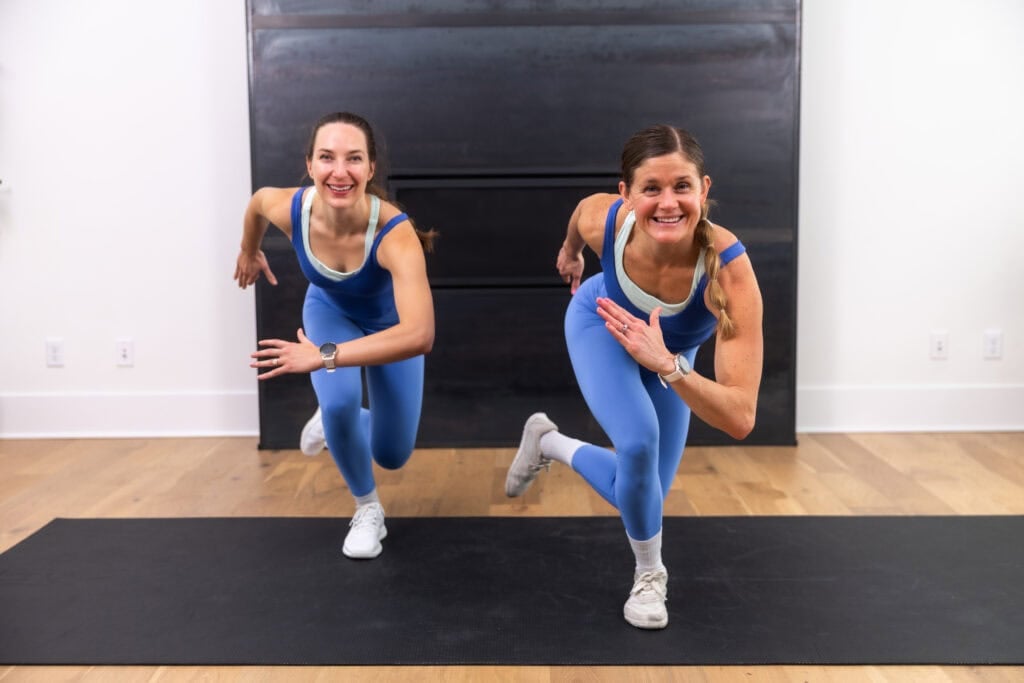
Workout Overview
This full-body HIIT session is designed to encourage fat loss and build strength, using just your bodyweight.
Although this is a high-intensity workout, modifications are offered to make this workout accessible to all fitness levels. I recommend adding HIIT cardio workouts like this to your home workout plan one to two times a week to improve endurance, boost athletic performance and burn fat.
Workout Instructions:
Follow along with the guided Full Body HIIT Workout on YouTube, led by me — your certified personal trainer, Lindsey Bomgren.
Your Workout Looks Like This:
- Guided Warm-Up and Cool-Down
- 30 HIIT Exercises
- Timed Intervals (perform each exercise for 30 seconds of work, followed by a 10 second rest period)
- No Repeat (performing each exercise x 1 set)
Workout Equipment:
No Equipment. You just need your body weight for today’s HIIT cardio workout.
Workout Outline
1. Squat Jacks
Targets: Legs, glutes, quads, hamstrings, outer glutes (side butt), inner thighs, calves and core.
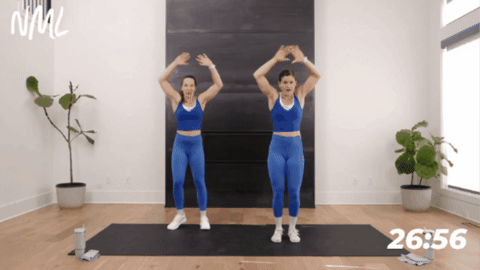
How to Do a Squat Jack
- Start in an athletic stance or loaded squat position, with your feet shoulder-width apart and a slight bend in your knees.
- With your chest upright and your core engaged, “jack” your feet out into a wide or sumo squat stance (feet are wider than your shoulders).
- Land softly in a low squat, aiming to tap the ground with your fingertips.
- Then “jack” your feet into a narrow stance, bringing your feet together as you stand tall. Think, wide at the bottom, narrow at the top.
2. Lunge Drops / Lunge Jumps
Targets: Legs, glutes, hamstrings, quads and thighs.
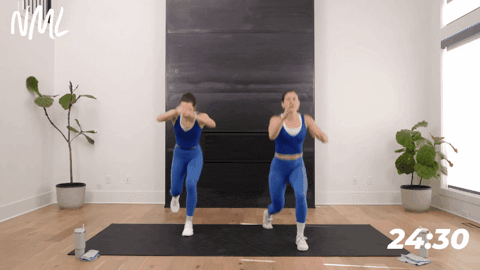
How to Do a Lunge Drop / Lunge Jump
- Stand with feet hip-distance apart and shoulders stacked over hips.
- Hop your left leg back into a reverse lunge position, lowering your hips until both knees reach a 90-degree angle. Your front thigh should be parallel to the floor.
- Explode up and back to the starting position, hopping your left leg to return to standing.
Modification: If lunges hurt your knees, substitute one of these lunge alternatives.
3. Skaters
Targets: Legs, glutes (outer gluteus medius), hips, calves, quads and core (for stability and balance).
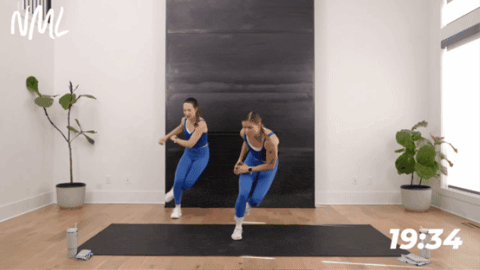
How to Do a Skater
- Start standing in an athletic stance, feet hip-distance apart, knees slightly bent, core engaged.
- Shift your weight to your right leg, slightly bending your right knee and lifting your left foot off the floor.
- Leap to the left side, jumping laterally and landing softly on your left foot, with your right foot sweeping behind you. Keep your chest up and core tight.
- Then repeat on the opposite side, pushing off your left foot to leap to the right, landing softly on your right foot and sweeping your left leg behind you.
4. Push-Ups
Targets: Chest, shoulders, triceps, back, abs and core muscles.
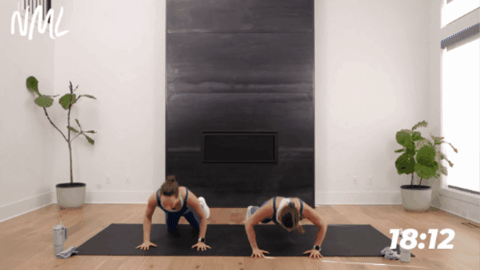
How to Do a Push Up
- Start in a standard high plank position, feet hip-width apart and shoulders stacked over your wrists. Press evenly into your hands to distribute your weight amongst all 10 fingers.
- Hold this plank position, maintaining a straight line with your body, gaze slightly in front of you.
- Slowly lower your chest down towards the ground as your elbows fall back towards your hips (not out to the sides, keep elbows tight to the body).
- Once you’ve reached the bottom of your push-up, exhale as you push back up into a high plank position (the top of your push-up position).
Modification: If you can’t do a full push-up on your toes, substitute one of these push-up modifications.
5. Plank Jacks
Targets: Shoulders, deep transverse abs, lower abs, upper abs, obliques, glutes, outer glutes, hips, calves and back.
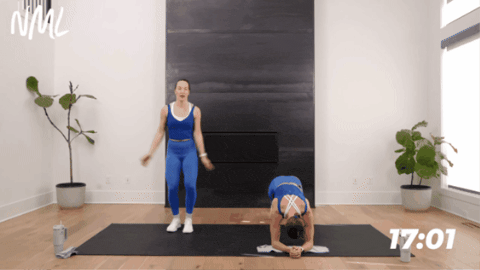
How to Do a Plank Jack
- Start in a tabletop position with shoulders stacked over wrists (soft bend in the elbows) and hips over knees. Drop down to your forearms, shoulders stacked over elbows and hands in front of you.
- Then step both feet back and extend the legs straight, balancing on your toes. Pull up on your kneecaps and push back on your heels to keep your core engaged as you find a forearm plank position. Body forms a straight line from your head through your heels.
- Hold this low plank position, maintaining a straight line with your body, gaze slightly in front of you.
- Step or jump your feet out to the sides, performing a plank “jack” with your lower body. Focusing on keeping your hips stable.
- Then, step or hop your feet back to center, returning to the starting position.
Modification: If being in the plank position hurts your wrists, check out these modifications for wrist pain.
6. Lateral Squat Jumps
Targets: Glutes (gluteus medius), quads, hip adductors (inner thighs), hamstrings and core.
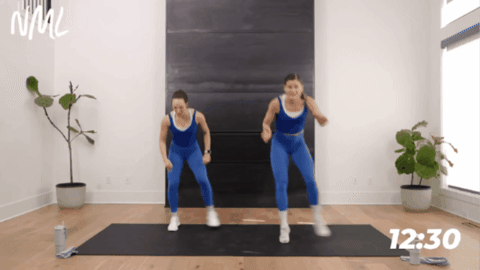
How to Do a Lateral Squat Jump
- Stand with your feet wider than shoulder-width apart, toes pointed slightly outward. Bend your knees to lower into an athletic stance.
- Shift the majority of your weight to your left foot, then explode up, pushing off your left foot to bound towards the left.
- Land softly with bent knees in a low squat, aiming to tap the ground with your fingertips.
- Then, reverse the movement, exploding off your right foot to bound towards the right.
7. Wide Mountain Climbers
Targets: Hips (abductors), hip flexors, groin, quads, glutes, hamstrings and low back.
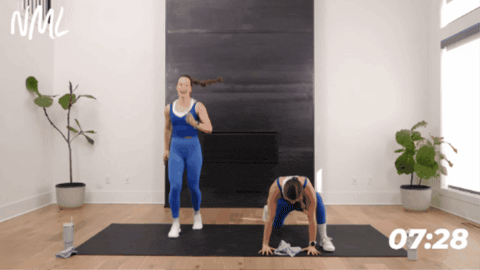
How to Do a Wide Mountain Climber (Spiderman Lunge)
- Start in a high plank position with your shoulders stacked over your wrists, weight evenly distributed amongst all 10 fingers. Pull your kneecaps up towards your belly to engage your low abs.
- Hold this position, maintaining a straight line with your body, gaze slightly in front of you.
- Jump your left leg forward, planting it outside of your left hand. Your left knee should be bent at a 90-degree angle, and your right leg should be straight.
- Then, moving both legs at once, jump your left leg back (returning to high plank) and right leg forward, landing with your right foot outside your right hand. Right knee is bent at 90-degrees.
- Continue this pattern, alternating which leg is forward with each jump.
8. Burpees
Targets: Upper body (chest, arms, back, shoulders), lower body (legs, glutes, hips) and core.
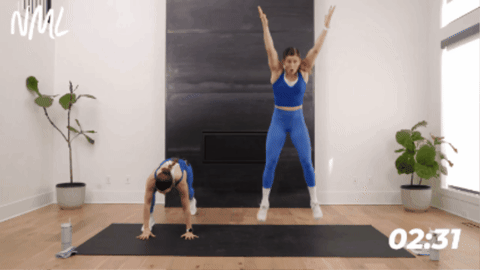
How to Do a Burpee
- Start standing, feet shoulder-width apart, arms at your sides.
- Bend your knees and drop your hips as you lower into a squat position. Then, place your hands on the floor directly in front of your feet.
- Shift your weight into your hands as you jump your feet back to softly land on the balls of your feet in a high plank position. Your body should form a straight line from your head to heels.
- Jump your feet up, landing outside your hands in a loaded squat position. Then drive through your legs to explode up, reaching arms overhead as you stand tall, returning to starting position.
9. Reverse Crunch
Targets: The lower abs and obliques. Also improves stability throughout the lower back, hips and spine.
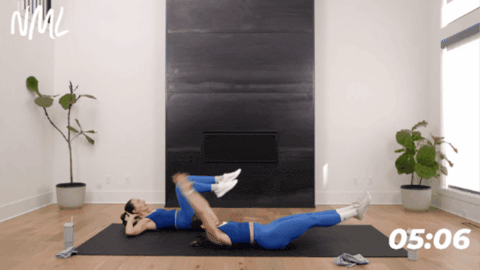
How to Do a Reverse Crunch
- Start lying on your back, core engaged, arms and legs extended out from your body and floating off the mat (the closer your legs are to the mat, the harder this exercise will be).
- Engage your upper abs to perform a sit-up as you engage your lower abs to pull your knees towards your chest, ending in a seated position with your knees bent at 90-degrees and heels floating off the ground.
- Hold for a second, then, with control, reverse the movement, rolling your spine down to the mat vertebrae by vertebrae while kicking your legs out away from your body to return to the starting position.
FAQs
Physically, HIIT is proven to improve heart health, lower blood pressure, burn calories, support weight loss, increase EPOC (Excess Post-exercise Oxygen Consumption) and boost metabolic function. HIIT has also been shown to benefit mental health by releasing endorphins, boosting your mood, and may improve cognitive function — especially in older adults (American College of Sports Medicine).
Eating the right foods before and after a high-intensity workout can help you both perform better and recover faster. Before a HIIT workout, I recommend recipes that provide a mix of quick energy and carbs, such as a banana with nut butter, Greek yogurt with berries, or a protein bar. After your workout, refuel with high-protein recipes to support muscle repair and growth.
If you’re brand new to HIIT training, I recommend starting slowly with shorter “work” intervals and longer rest periods. You can gradually increase the duration of your work intervals as you progress. I also recommend beginners start with low-impact HIIT cardio workouts to reduce the risk of joint pain or injury.
More Workouts
HIIT WorkoutsPin This HIIT Workout
